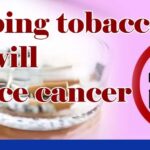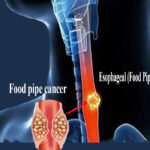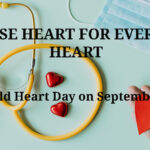

Tobacco use and smoking increases the risk of cancer. Smoking damages nearly every organ in the human body causing many diseases -especially it is linked to at least 10 different cancers.
India is the second largest global producer and third-largest consumer of tobacco and has more than 200 million tobacco users. Of these, nearly 17 million are under the age of 25. India accounts for nearly a third of an estimated three million tobacco-related deaths in the world (per year). WHO reports suggests that 65% of all Indian men use at least one form of tobacco. For women, the usage statistics differed from 15% in rural Gujarat to 67% in Andhra Pradesh.
India has one of the highest rates of oral cancer in the world and rates are still increasing. This disproportionate incidence of oral cancer has been related to the high proportion of tobacco chewers, a habit unique to Indians. Twenty percent of the total tobacco consumed in India is in the form of cigarettes, about 40% is in the form of bidis and the remaining 40% is consumed as smokeless tobacco (in the form of chewing tobacco, pan masala, snuff, gutkha, masheri and tobacco toothpaste).
More than 4,000 individual chemicals have been identified in tobacco and tobacco smoke. Among these are more than 60 chemicals that are known carcinogens (cancer-causing agents). Some of the compounds found in tobacco smoke include ammonia, tar, and carbon monoxide. Nicotine is the addictive drug in tobacco. It is as addictive as heroin and cocaine. The body becomes physically and psychologically dependent on nicotine. In one regular cigarette, the amount of nicotine ranges between about 1 mg and 2 mg, an average dose for snuff is 3.6 mg, for chewing tobacco, 4.6 mg.
Smoking and cancer


Smoking damages nearly every organ in the human body causing many diseases. Smoking is linked to at least 10 different cancers.(Major cause: Cancers of the lung, larynx, oral cavity, pharynx, esophagus, and bladder. Contributing cause: Cancers of the pancreas, cervix, kidney, stomach, and also some leukemias.)It accounts for some 30% of all cancer deaths. About 87% of lung cancer deaths are caused by smoking. The risk of having lung cancer and other smoking-related cancers is related to total lifetime exposure to cigarette smoke. This is measured by number of cigarettes smoked each day, the age at which smoking began the number of years a person has smoked. There is no way to accurately calculate a person’s risk of getting cancer, but the more you smoke and the longer you do it, the greater your risk. Bidis have all of the same health risks of regular cigarettes.
Even though bidis contain less tobacco than regular cigarettes, they have higher levels of nicotine and other harmful substances such as tar and carbon monoxide.They are thinner than regular cigarettes, so they require about 3 times as many puffs per cigarette. They are also unfiltered. There is a belief that cigar smoking is more “civilized” and “glamorous,” as well as less dangerous than cigarette smoking.
But actual fact is a single large cigar can contain as much tobacco as an entire pack of cigarettes. Similarly hookahs are considered as safe alternative to cigarettes. But the water in hook has does not filter out many of the toxins. Hookah smoke has been shown to contain concentrations of toxins, such as carbon monoxide, nicotine, “tar,” and heavy metals, that are as high or higher than are seen with cigarette smoke.Hookah is also linked to other unique risks not associated with cigarette smoking like infectious diseases (including tuberculosis, hepatitis, and HIV)
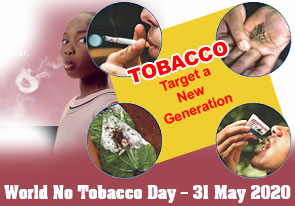

Another important aspect which we should be aware of is secondhand smoke, also known as environmental tobacco smoke (ETS) or passive smoke. It is a mixture of 2 forms of smoke from burning tobacco products, Side stream smoke that comes from the end of a lighted cigarette, pipe, or cigar and Mainstream smoke, smoke that is exhaled by a smoker. Nonsmokers exposed to secondhand smoke absorb nicotine and other toxic chemicals just as smokers do. The greater the exposure to secondhand smoke, the greater the level of these harmful chemicals in your body. Three locations where you should be especially concerned about exposure to secondhand smoke are Your workplace, Public places,Your home. In-fact making your home smoke-free is perhaps one of the most important things you can do for the health of your family.
USE OF SMOKELESS TOBACCO AND CANCER
The most serious health effect of smokeless tobacco is an increased risk of cancer of the mouth and pharynx. A report in the Journal of the American Medical Association calculated that smokeless tobacco users ,who chew 8-10 times a day might be exposed to the same amount of nicotine as people who smoke 30-40 cigarettes a day.”As health experts know that children started using smokeless tobacco six or seven years ago, they fear an epidemic of oral cancer will soon hit India. There are various reasons for this. Most people have no idea that consuming smokeless tobacco is as dangerous as smoking. They are often used in social gatherings.
Gutkha, does not say it contains tobacco.Packets of pan masala do bear health warnings, but they are rendered almost invisible by the bright shiny packaging and the small size of the warnings. Consequently, unlike smoking, which must be hidden from adults, children can openly consume pan masalas and many a times are introduced to this by elders in the family.
CHILDREN AND TOBACCO
Children and teens are easy targets for the tobacco industry.Children are heavily influenced by TV, movies, advertising, and by what their friends do and say. But despite this parents can be THE GREATEST INFLUENCE in their kids’ lives. SO Keep Your Kids away from Starting by setting you as an example. Talk directly to your children about the risks of tobacco use; if friends or relatives suffer with or died from tobacco-related illnesses, let your kids know.
QUITING TOBACCO
Seventy percent of smokers want to quit and 35% attempt to quit each year, fewer than 5% succeed. The argument that it is too late to quit tobacco because the damage is already done is not true.It is never too late to quit
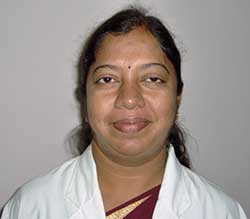

Dr.Geetha Narayan
Vydehi Hospital
Whitefield, Bengaluru-560066
ph:080-28413381/02/03



